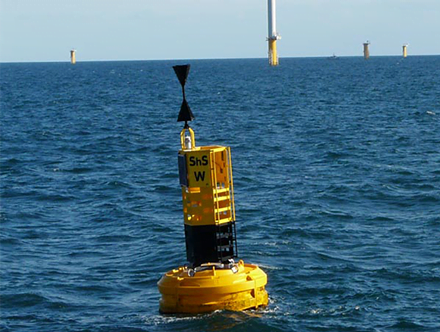With calmer seas, longer days and less inclement weather conditions, summer is the time to inspect your navigation buoys and perform any necessary maintenance. This way you may be able to avoid the cost of replacing or repairing a buoy in the autumn and winter months; when poorly maintained buoys are most likely to suffer damage or come free of their moorings in rough seas.
It is also a good time to review legacy systems and whether it would be more cost effective to replace older steel buoys with modern polyethylene navigation buoys instead. Replacing them now could significantly reduce the cost of maintaining legacy navigation aids – including bringing them in every few years for repainting.
Casualty response is costing harbours, ports, and offshore organisations thousands every year. Boat time, man-hours, and parts add up, and costs can soon exceed a yearly maintenance contract. If you want to make cost savings and reduce the time spent resolving unplanned incidents, a programme of inspecting, maintaining and repair is essential.
So, having booked your boat time, what should you be doing?
Here’s our checklist to get you started.
Checklist For Navigation Buoy Maintenance
Inspection: To fully inspect your navigation aids it will be necessary to lift it out of the water onto the deck to inspect the underwater as well as the visible areas. Look for unreported damage, wear and tear, and test ancillary equipment including navigation lights, sensors and monitoring equipment, solar panels, batteries and power supply.
Also inspect chains, moorings and the sinker for damage or loose fittings. Complete a report on the state of the buoy, including recommendations for replacing parts as they near their end of life.
Repair: Where feasible make any essential emergency repairs. Schedule any other repairs to be completed in a timely fashion.
Maintenance: To prolong the lifespan of your navigation aids a thorough clean is required. A high-pressure jet wash will remove material that may affect performance, or accelerate wear and tear. Lights must also be cleaned and inspected to ensure correct operation.
Re-Deployment: Once the buoy has been fully serviced it can be re-deployed in the correct position. Automatic monitoring systems can also be fitted, if not already, to monitor key functions and ensure the buoy is on its correct mooring.
Schedule repairs and replacement parts: Prioritise any repairs that were not carried out, and create a timetable for replacing parts to prolong the life of the buoy.
Book in your next maintenance check: Regular maintenance checks will pre-empt problems and can prevent casualties. They also increase the lifespan of the buoy and ancillary equipment, ensuring you get more out of these assets. Annual inspection and maintenance checks are appropriate for most deployments; but in some situations – in problematic locations – it may be necessary to inspect more often.
We would also recommend ad-hoc inspections after unusual weather events or if there have been higher volumes of traffic in the area: for example, after the summer season in our coastal harbours and marinas.
To find out more about our maintenance services – both fixed and floating – please contact our team. Call +44 (0)1383 419096 or email sales@hydrosphere.co.uk








